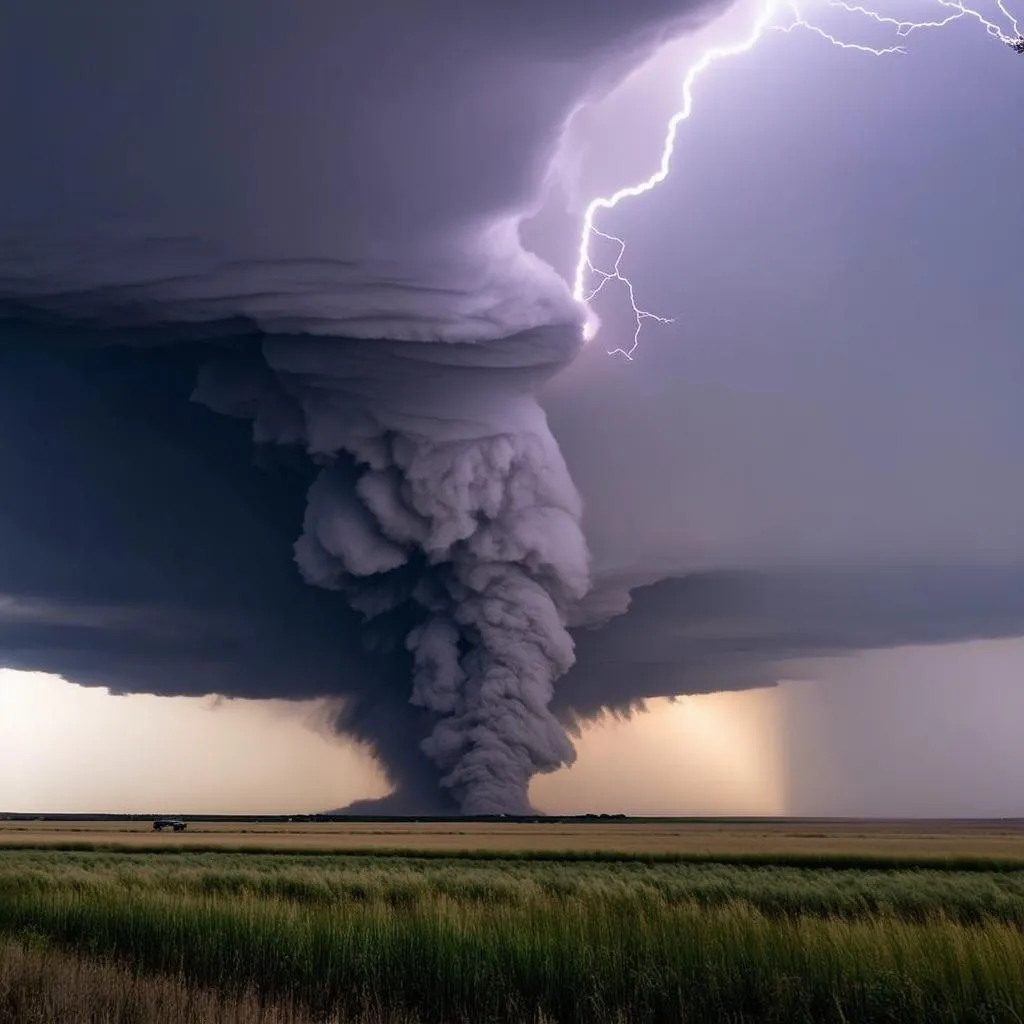Imagine this: you’re driving down a scenic highway, perhaps Route 66 with its iconic landscapes, and you spot a funnel cloud in the distance. A chill runs down your spine as you wonder, “How fast can that thing move?”
It’s a question that’s captivated many, and for good reason. Tornadoes, with their raw power and unpredictable nature, are a force to be reckoned with. Understanding their speed is crucial, not just for satisfying curiosity, but for staying safe when these whirling giants decide to dance.
Decoding the Speed of a Tornado
The speed of a tornado can vary greatly depending on its strength and the surrounding atmospheric conditions. On average, a tornado travels at a forward speed of 10-40 mph (16-64 km/h).
But here’s the kicker: We’re not just talking about the speed at which it crosses the land. The true fury lies within its rotational speed, which can reach a mind-boggling 300 mph (480 km/h) in the most violent tornadoes, categorized as EF5 on the Enhanced Fujita Scale.
Factors Influencing Tornado Speed
- Strength: More powerful tornadoes, like those ranked EF4 or EF5, tend to move faster than weaker ones.
- Wind Shear: Changes in wind speed and direction at different heights, known as wind shear, play a crucial role in both the formation and movement of tornadoes.
- Terrain: Believe it or not, the lay of the land can influence a tornado’s path and speed. Flat, open areas like the Great Plains allow for faster movement compared to hilly or mountainous regions.
Myths vs. Reality: Debunking Tornado Speed Misconceptions
There are many misconceptions surrounding tornado speed. One common myth is that tornadoes always move from west to east. While it’s true that most tornadoes in the Northern Hemisphere follow a southwest to northeast path due to prevailing winds, there have been instances of tornadoes moving in other directions.
Another myth is that you can outrun a tornado in a car. While it’s possible to drive away from a tornado if you’re far enough and have a clear escape route, remember that tornadoes can change direction quickly and unexpectedly. Your best bet is to seek sturdy shelter immediately.
 Tornado on the Great Plains
Tornado on the Great Plains
Staying Safe During a Tornado
Knowledge is power, and understanding how fast a tornado can travel is the first step towards staying safe. Here are some additional tips:
- Stay informed: Pay attention to weather forecasts and warnings.
- Seek shelter: If a tornado warning is issued, immediately find a basement, storm cellar, or an interior room on the lowest floor of a sturdy building.
- Have a plan: Discuss tornado safety with your family and establish a plan of action.
 Family huddles in storm shelter
Family huddles in storm shelter
Tornadoes and Travel: What You Need to Know
Planning a road trip through “Tornado Alley” in the United States? While the chance of encountering a tornado is relatively small, it’s essential to be prepared.
- Check the forecast: Stay updated on weather conditions before and during your trip.
- Know the signs: Learn to recognize the signs of a tornado, such as a dark, greenish sky, a roaring sound like a freight train, or a wall cloud.
- Be flexible: If a tornado threat arises, be prepared to alter your travel plans and seek shelter.
By understanding how fast a tornado travels and taking appropriate precautions, you can minimize risks and enjoy your travels with peace of mind.
For more information on weather safety and travel tips, visit TRAVELCAR.edu.vn.

